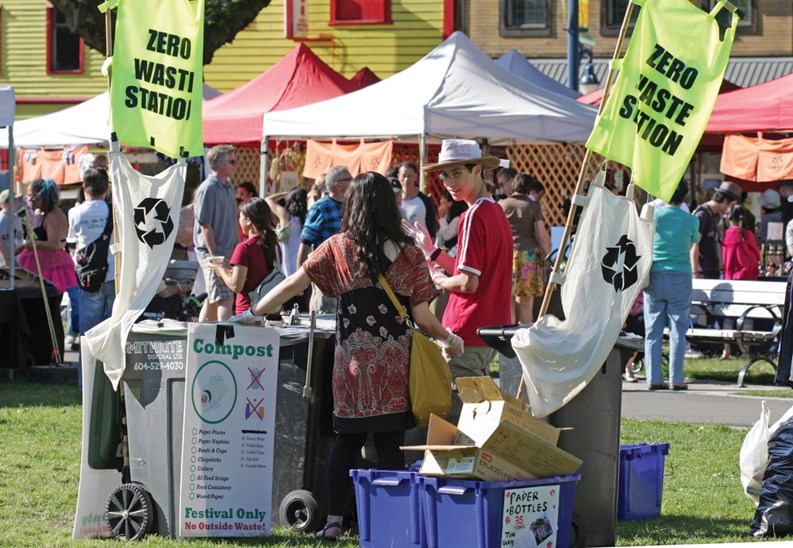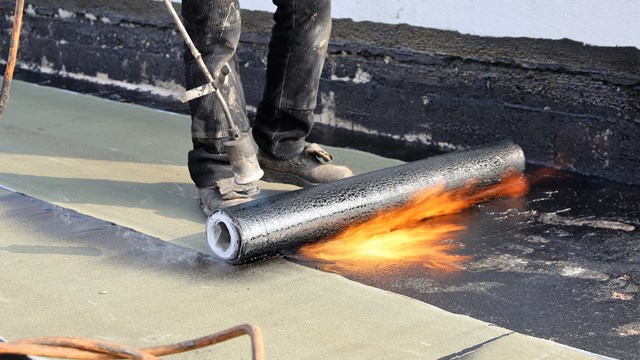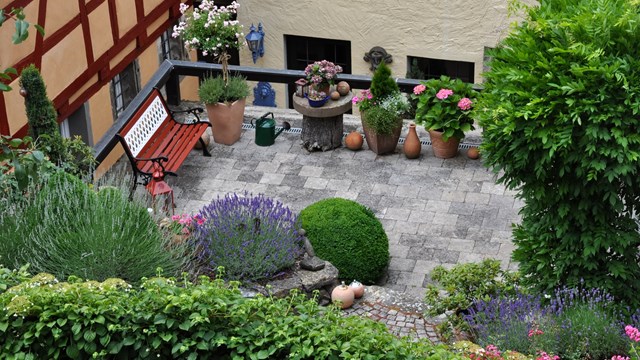These days, as the summers get hotter, the storms get bigger and climate change is finding its way into more headlines than ever before, more attention is being paid to the environment and how the average citizen can do his or her part to support and repair it. In response to increased demand from Mother Nature, New Jersey has striven to be a leader in energy conservation, waste reduction and the creation of green policies designed to prepare its buildings and its residents for life in an uncertain environmental future.
As a result, condo, co-op and HOA boards and managers find themselves introducing new rules, regulations and technologies into co-ops and condos to improve comfort for residents and work in tandem with nationwide efforts to be better stewards of our resources and climate. And it is a trend that seems to be growing.
People Want to Know
“We regularly have board members reach out to their management team about greening their property,” says Doug Weinstein, executive director of operations and vice president of New York-based Project Management Group (PMG) and AKAM Associates. “And PMG consistently receives inquiries for more information as to how properties can be more energy efficient and sustainable. As greening becomes a more widespread practice, the inquiries continue to rise. You also have many new buildings being constructed with sustainability and greening practices in mind from their inceptions.”
Cecil Scheib, PE, CEM, LEED AP, GPRO, chief program officer of the Urban Green Council in New York City, has seen first-hand the results of buildings focusing on energy conservation and green policies. “It happened in my building,” he says, citing a conversion to LED lighting. Throughout the country, “We’re seeing a trend,” he says, especially involving management companies making suggestions and providing guidance on renovations and upgrades.
Encouraging Change
Making major changes in energy consumption or green lifestyles takes the support and engagement of all residents to be successful.
“In my experience, the important thing is showing people the value of what they can do by going green,” says Scheib. “Each person is motivated by different things. One may say they want to see a spreadsheet of savings, while another may want to hear about [how greening may mean] less maintenance.”
One approach with almost universal appeal is sharing how changes will affect the everyday lives of people in the building. If, for example, a board is going to replace the boiler controls, Scheib says he would focus on informing the residents about how their units will be less drafty and more comfortable since they won't have to open windows in the winter to ease overheating, and how the upgrade will pay for itself in energy savings.
George Crawford, principal of Green Partners LLC in New York City, encourages boards to educate residents on the economic benefits of energy conservation. “Any resident, if you tell them ‘I’m going to save you some money,’ they’ll be happy,” he says. “It is possible to go green and save money and that’s the most practical way to approach it.”
Weinstein agrees, adding, “The best way to discuss greening with your residents is to educate them. An educated person is more likely to agree and understand what your building may be trying to achieve with greening techniques. Once residents understand the improvement greening can make, they are more receptive to the idea.”
A Team Effort
Working in tandem with management can assist in the transition. “We work with our boards to make it as easy as possible for residents to practice green techniques,” says Weinstein. “Whether that means setting up collection sites that are easily accessible, or training building staff on how to properly handle new greening techniques, we realize the best way to get residents involved is by making it so easy that it becomes second nature to them.”
Green committees also can be helpful in convincing neighbors and fellow residents of the benefits of a program or technology. For example, “low-flow toilets can have a fantastic payback that can be measured in months,” says Scheib. They can be a difficult sell, though. “If you have a committee that can state objectively, ‘We tested five different toilets and everyone agrees this is the best,’ there’s much more trust.” People will listen if they feel that a friend or someone else who is just as invested as they are in the success of the building community has given the proposed change his or her stamp of approval.
Erica Brabon, a senior consultant in multifamily energy services with Steven Winter Associates, Inc., which has offices in New York City, Connecticut and Washington, D.C., agrees. "Having green committees or green leaders can help a lot. When a message germinates from one's own neighbors, it can be much more inviting than had it come from an outside consultant. It's also imperative for resident engagement. Someone might pay a consultant to come in for a few meetings, or staff may hang a few signs, but it's important that point people who reside in the building are pushing the outreach on a regular basis."
Making Good Choices
A number of different technologies an d initiatives are taking center stage these days. Many of these “revolve around energy consumption—either electric or fuel for heating,” says Crawford.
According to Weinstein, “We continue to see a rise in the implementation of solar panels, green roofs and living walls in building lobbies. I wish it were possible for every property to add solar panels or a green roof, but these initiatives depend on numerous variables, and not every building can be a candidate.”
In addition, “The current biggest greening initiative we see is the switch to LED and bi-level lighting,” says Weinstein. “Gas conversions, which are considered a greening technique due to the reduction of the building’s carbon footprint, are a close second. The initial investment for some of these can be high, but the long-term benefits outweigh that initial expense.”
Improving heating and cooling also can have a very powerful impact on quality of life, energy conservation and a reduction in costs for buildings. “For heating, you can put in sophisticated controls based on interior temperatures of the building,” says Crawford. “You’re heating what you need to heat and not any more. You can zone the building, like a home. So if the building is warmed by solar heat, you let the sun do its job and not double. You don’t want to heat areas twice. That’s like double dipping.”
This zone approach can alleviate the all-too-common occurrence of residents in one section of a building getting too much heat and having to open windows in the dead of winter while residents in other areas are piling on the sweaters and wiping frost from their windows.
Water use reduction is another angle at play in regard to sustainable living. "Savings from low-flow aerators and shower heads have a very fast payback: six months to a year," says Brabon. "Those should be a no-brainer for any building. Toilets are a bigger expense, but if those being replaced are pre-early 90s, you'll see quick savings and better performance with newer models—and they're also a selling point for condos, co-ops and rentals."
Helping residents understand ahead of time how green approaches can make life better and more comfortable is of paramount importance in getting buy-in from the whole building community.
Expert Advice
When it comes time to make a decision about what kind of upgrades or changes will be most impactful for your building and residents, it can help to meet with a consultant who knows what's available, and what's practical for your particular community. “It is important to discuss your ideas with a professional management company that understands and implements greening initiatives,” Weinstein says. “A professional agency will know what will work and what will not. For instance, not every building can successfully employ solar panels, due to the Earth’s axis orientation or the availability of roof space. A competent management firm will be able to identify which techniques will benefit your building and guarantee a return on your investment in the long run.”
Change
Planning for green modifications well ahead of time gives residents time to better understand the changes and become invested in the projected results. It also can save money. “You have to plan ahead,” says Scheib. “Doing an engineering plan for a rooftop solar installation might take a while. But you could include it in a feasibility study and plan for it.”
That also allows for projects to be piggybacked on one another. “For infrastructure, for example, the time to do rooftop solar is when the roof needs replacing,” says Scheib. “It’s much easier to add the expense for an energy project into an existing project than doing it separately and off-cycle.”
With proper planning, the assistance of experts as well as the investment of time, energy and enthusiasm from green committees and other resident leaders, the transition to greener living can be a very positive and pain-free one. So many resources exist in New Jersey and nationwide to assist residential buildings in making these transitions, and more and more management firms each day are investing resources in helping their clients go green.
To point to but one such resource, Brabon co-developed a toolkit for Enterprise Green Communities called 'Resident Training in a Box.' "It gives a lot of videos, activities, signage, presentations for meetings and a toolkit for resident green leaders," Brabon says. "It's a great place to start for these types of greening aids."
Concern for the environment is a trend that appears to be growing, not slackening, and one that will no doubt pay off for residents with cleaner, more efficient and more comfortable homes. It also may strengthen the bottom lines for co-ops and condos, helping significantly reduce energy costs. Perhaps most importantly, the more buildings that make these transitions, the greater the impact on the environment and the better off we all will be in the decades to come.
Liz Lent is a freelance writer and a frequent contributor to The New Jersey Cooperator. Staff writer Michael Odenthal contributed to this article.







Leave a Comment